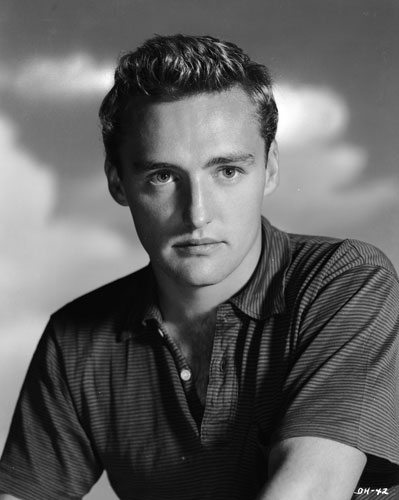
Born in 1936, Dennis Hopper played supporting roles in Rebel Without a Cause and Giant alongside his friend, James Dean, before falling out of favour with Hollywood. In 1959 he began five years of study with Lee Strasberg at the Actors Studio.
Hopper later found renewed fame when he directed, produced and starred in Easy Rider (1969.) After battling drug addiction, he once again resurfaced, with memorable roles in Apocalypse Now (1979) and Blue Velvet (1987.) He was also a prolific photographer, artist and sculptor.
Dennis Hopper died in 2010. He was rumoured to have attended a 1962 party where Marilyn Monroe met LSD ‘guru’ Dr Timothy Leary (though Leary’s own account has been disputed.)
In another post for his Follies of God blog, James Grissom has featured a portion of an undated interview with Hopper. The extract does not clarify whether Dennis knew Marilyn well – it focuses on his ideas about her enduring fame, though they may have known each other from the Actors Studio. In the excerpt, Hopper compares Marilyn to a Guatemalan trouble doll ( also known as worry dolls.)
“Marilyn was like a trouble doll for a lot of people: A lot of people needed her because she was beautiful and she was sweet and she was pretty much what a lot of people believed was a perfect woman–a sexual machine with a heart. And a lot of people needed her because they wanted her to fail or to cry or to die, because they wanted to believe that all of her gifts–physical and otherwise–wouldn’t save her or make her happy. So the ugly and the mean-spirited could feel better about their lives and their various lacks. And a lot of people looked at her and saw money and sex and power and an evil sort of joy that comes from getting off. She was a product, a commodity to them. And a lot of people needed her because she so clearly needed a friend, needed some love, and a lot of people really wanted to give this to her.Marilyn Monroe was this creamy, sweet, beautiful trouble doll for a lot of people, and we whispered to her image or her memory and told her what we needed, what we desired, and then we believed that things would happen or change. And she got put in her box and was put on an eternal shelf, where we can continue to ask of her what we need.”